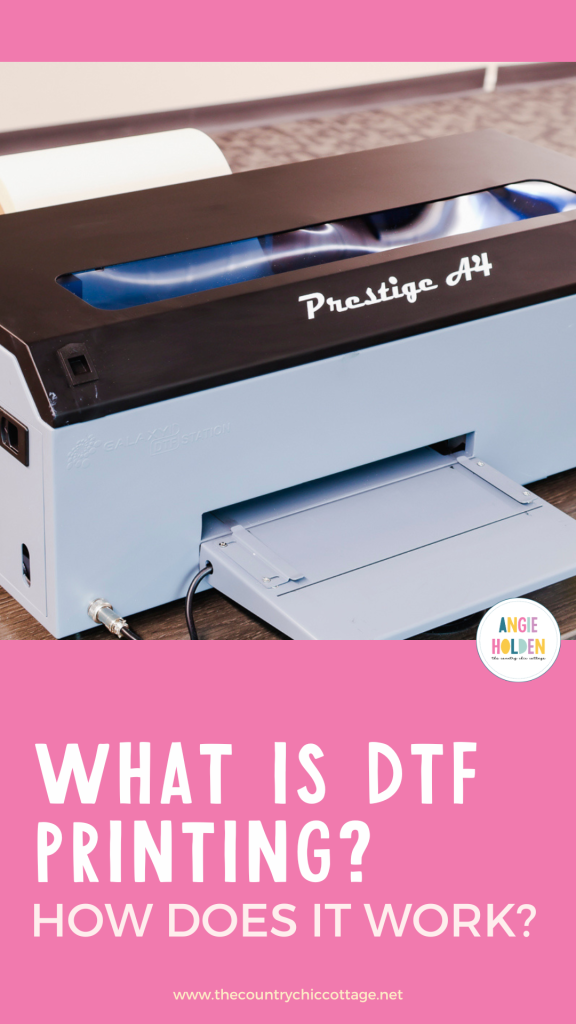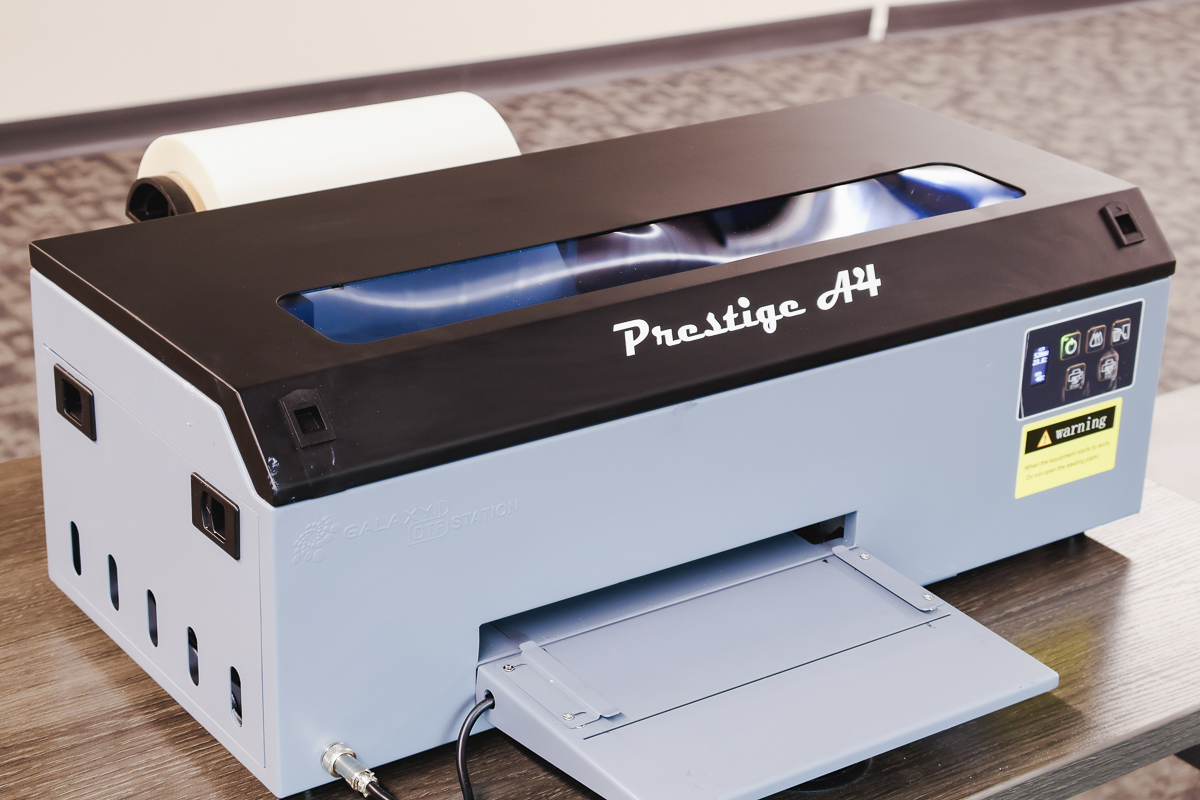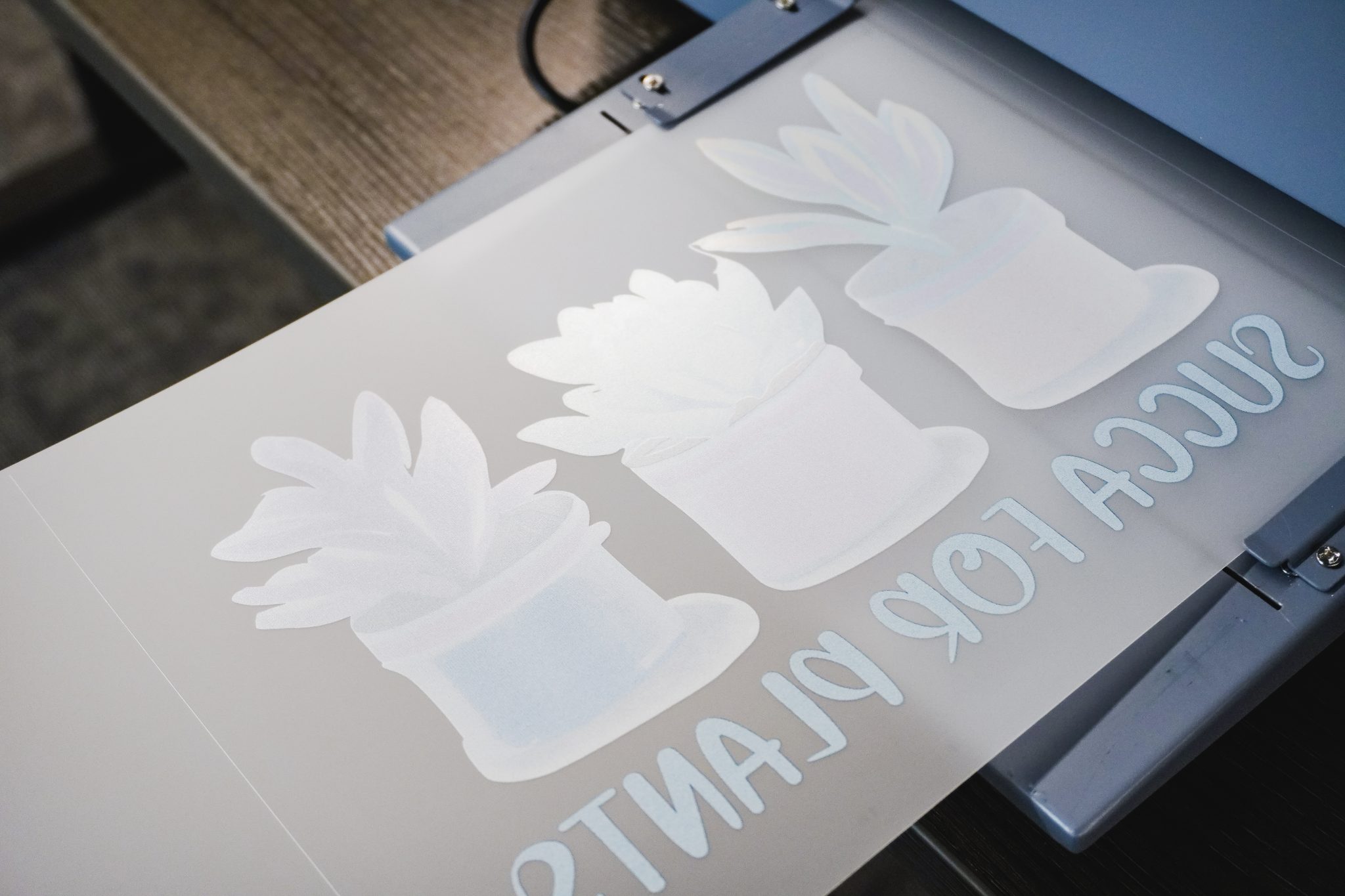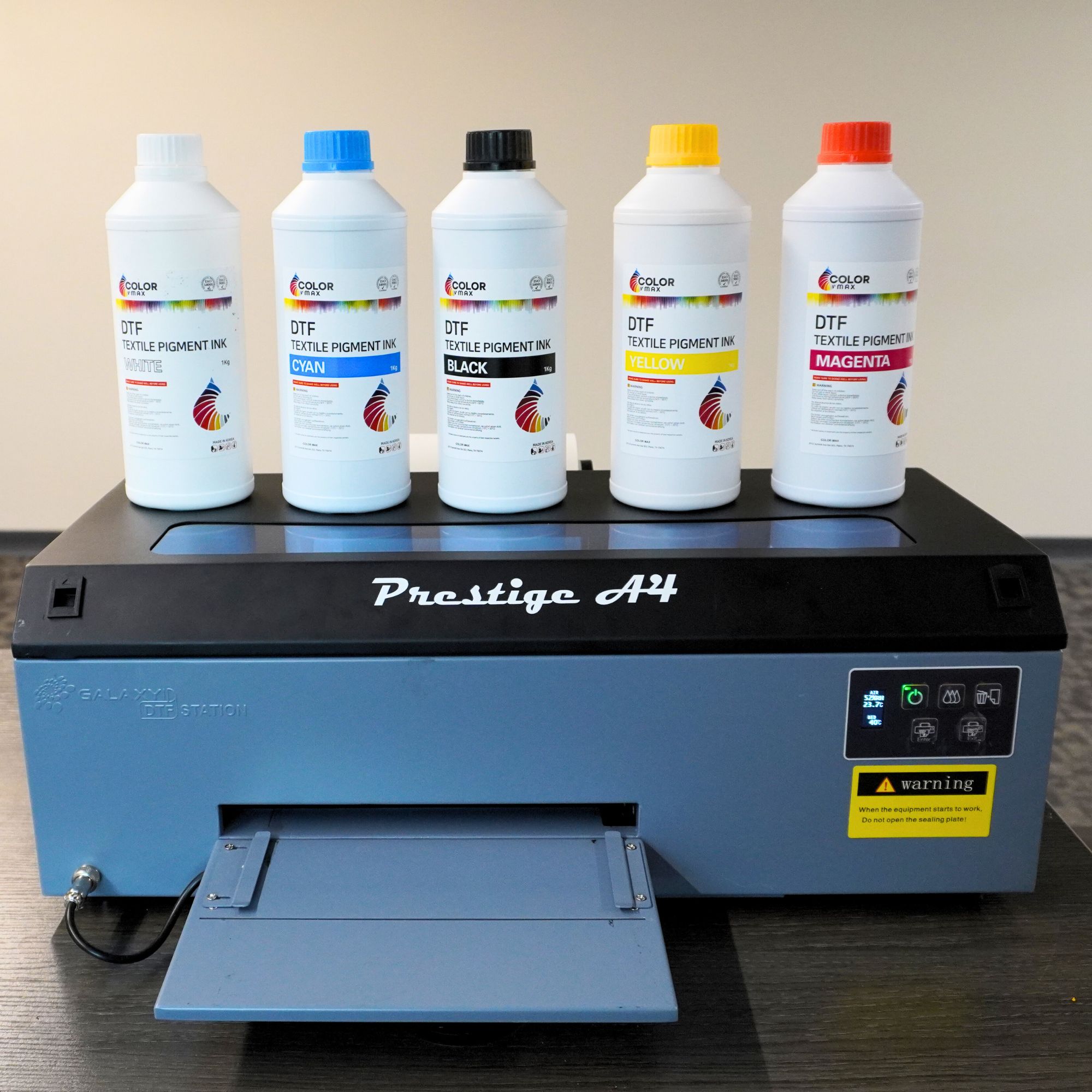This post and photos may contain Amazon or other affiliate links. If you purchase something through any link, I may receive a small commission at no extra charge to you. Any supplies used may be given to me free of charge, however, all projects and opinions are my own.

I’ve received so many questions about the DTF printing process. This is actually the first in a series of articles answering questions like “What is DTF printing?” “How does it work?” “What supplies do I need?” and more.
Follow along to learn all you need to know about DTF printing in the coming weeks. You can sign up here to get DTF updates!
DTF printing is different than sublimation printing. If you’re looking for more information on sublimation printing, my Beginner’s Guide is a great place to start.
What is DTF Printing?
Let’s start at the beginning, DTF stands for Direct to Film. DTF printing means printing directly on film that is used to transfer ink to substrates like shirts. DTF is traditionally done with a DTF printer that uses special ink and is made to print on rolls of film or on film sheets.
You can watch me walk you through all of this information by pressing play on the video below.
How is a DTF Printer Different?
A DTF printer is a special printer that can print directly onto special film with a special ink including white ink.
That’s right, a true DTF printer can print all colors including white. This means you can actually add white to dark-colored fabrics with DTF ink.
How is DTF Different than Sublimation?
DTF is different from sublimation in a few different ways.
- First, DTF printing works on cotton fabric, polyester fabrics, and all other fabric types. It can also work on all fabric colors. You’re not limited to light colors with a high polyester count.
- DTF printing only works on fabric projects. You wouldn’t use this process on tumblers, mugs, or other blanks like we can with sublimation.
- Where sublimation ink is translucent, DTF ink is opaque so even light colors of ink can be used on dark fabrics and show up exactly the color you want.
- DTF ink also sits on top of the fabric like HTV or screen printing. It does not infuse into the fabric fibers like sublimation or Infusible Ink.
DTF Printing Safety
Now that you know a little about what DTF printing is, I want to talk about safety when working with this process.
DTF uses a powder to adhere the ink to the fabric. You do not want this powder getting into your eyes or lungs. I would recommend wearing goggles or a face shield to keep the powder out of your eyes and face.
I would also consider wearing a mask to prevent breathing the powder in and even gloves and an apron. This powder is likely to get everywhere and I prefer to keep it off me.
What Type of Powder Should You Use?
While we’re talking about safety precautions, I want to talk specifically about the powder.
I strongly recommend using a certified powder. OEKO-TEX is a standard that companies can apply for which means a product is safe for human use. I would make sure any powder you use has this certification or something similar.
DTF Printing Ventilation
You do want to have proper ventilation when doing DTF printing during the process when you cure the powder to the transfer. I recommend an enclosed oven that has an air purifier attached. If you use a heat press to hover over, do this at your own risk and in a well ventilated area.
DTF Printing Supplies and Equipment
Now that we’ve talked about safety precautions let’s talk about traditional DTF printing and the supplies and equipment used. You can get a DTF printer bundle here with the supplies needed to get started!
DTF Printers
DTF printers can be purchased in a variety of brands and different print sizes. I will review a printer in a future article that is small enough to be used in a regular craft space or in a small hobby business.

RIP Software
A traditional DTF printer uses special ink to print onto the film and in order to print to that printer you need a special software called RIP software.
Regular printing software doesn’t recognize the ability to print white. The RIP software translates your design into something that has the right color combination so all colors are printed correctly. The RIP software communicates between the computer and the DTF printer.
DTF Powder Shakers
When the film comes out of the printer the ink will be wet. This is when you apply the DTF powder to it. You can apply the powder manually but there are also powder shakers that you can use to help automate the process.
Specialty DTF Curing Oven
Once the DTF powder is applied, you need to cure the powder before pressing it onto the fabric. I recommend using the specialty oven that has an air purifier on it.
The biggest safety risk you run with DTF printing is inhaling the powder or fumes that the powder creates when you cure it. Those fumes need to be ventilated. The specialty ovens for curing the DTF film and ink purify and filter the air.
It is an enclosed system that purifies the air before releasing it into your crafting space.
Curing DTF Powder Without a Specialty Oven
I have seen people cure the DTF film right on the heat press by hovering the heat plate over the top of the film. If you do this, make sure your space is well ventilated. Those fumes will spill out into your workspace and you don’t want to be inhaling them, they can be harmful to your health over time.
Heat Press
A heat press is required to press the DTF film onto the fabric. Just like HTV and sublimation, your design needs to be mirrored and then will be applied to the fabric via heat.
Follow the directions for your specific materials for time and temperature.

What is the DTF Hack?
Next, I want to talk about the DTF hack that many people are using. The DTF hack calls for using a sublimation printer instead of a DTF printer. After printing onto the film through the sublimation printer, DTF powder is added to the film while the ink is still wet.
While this hack seems to work in a lot of cases, there are a few reasons I haven’t tried it yet.
- First, I am concerned about the powders that are being used for the hack. I would only use a certified DTF powder.
- Second, I haven’t seen anyone using the DTF curing oven or an air purifier or even talking about the ventilation and safety needed when using the DTF powder and the fumes it can create.
At this time, I will be sharing the process for traditional DTF printing. If you choose to try the DTF hack, I caution you to keep the safety precautions I mentioned above in mind. No craft project or business should be hazardous to your health.
How Does DTF Printing Work?
The powder that is added to the wet DTF ink is actually the glue that is going to adhere the ink to the shirt. That makes the powdering and curing steps within the DTF process are very, very important.
I also believe that the type of ink you use during this process is important and will factor into the overall longevity of the finished product.
What are the Benefits of DTF Printing?
- DTF printing looks and feels like a screen print or HTV, sitting on top of the fabric. It does not embed into the fabric like sublimation.
- DTF is very elastic and it stretches well with the fabric.
- It has a high wash and wear-resistant which leads to a very long life. NOTE: I will be putting that to the test during this series.
- Another benefit is the ability to print white. If you use a real DTF printer with the DTF inks, you will have white ink. I think the white ink really makes the designs pop, especially on dark fabrics.
Who is DTF Printing For?
Now, you may be wondering who DTF printing is right for.
A lot of people use a DTF printer to print onto film to customize shirts for themselves. Some people sell finished products and some people create DTF prints and sell the prints for customers to apply to their own shirts. Some other people do a combination of all of the above.
As we go through this DTF printing series, we’ll talk about all of these different options.
You may find that DTF is exactly what you’re looking for or you may find you’re happy with the options you already have.
I hope I’ve answered some of the questions you have about DTF printing and I would love for you to leave additional questions you have in the comments.

